02/02 - 12/03, 2022
-
Riccardo Previdi
andrà tutto bene
andrà tutto bene (everything will be fine), writes Grandmother Angela who is 100 years old and who has lived through many historical changes and events. Her handwriting, immortalised in the neon sign that gives the exhibition its title, is the latest in a family lexicon linked to Riccardo Previdi that began in 2006 with Rendez-vous (Christiane), written by his future wife and continued in 2017 with What next? (Franca), composed when their daughter was four years old. This is a layered exhibition of thoughts, references, materials, collaborations and languages, in which nothing seems to be left to chance.
There are eight ceramic containers in the gallery, plus one that, unlike the others, has no function as a vessel. Each item was finished by the Italian company Wasp using a 3D printer for clay, with the various work steps, from digital modelling and cloning, printing and hand modelling, to firing and glazing, all performed and realised between Milan and Faenza by helpers and experts in the craft of ceramics working under the direction of the artist.
Each of the urns has its own characteristics; each one rests on a pedestal of varying height. The combinations of warm pastel colours that distinguish the objects are based upon an oil pastel drawing of a floral subject by the symbolist painter Odilon Redon, leading us away from funereal thoughts and introducing us to a spirit of celebration. A mirrored object rises up between the vases, resembling a beehive or a birdhouse with twiglike sticks poking through the crevices: a reference to the iconography of the martyrdom by arrows of Saint Sebastian.
Previdi’s references have always ranged over art and architecture and design. The urns on display are pumpkin-like in shape, the initial prototype having been purchased by the artist at the wholesale vegetable market in Milan where, years ago, Grandma Angela used to buy her supplies.
The urns have a hollow body and a lid – in some cases visible, in others concealed within the cavity of a vase or the shell of a canopic jar, in a genealogy that runs from the Etruscans to China and as far as Benin. The urns created by Riccardo Previdi are vases that contain and solidify memories but also act as future vessels. Who knows what might happen if they were to be rediscovered in an era too distant to contemplate?
This exhibition is based upon a search for balance between the subject-author, who turns over a series of manual and human parameters to technological and digital processes, and the sculpture-objects, which are the products of this decision-making chain that abstracts itself from one step to the next. Previdi is not mistrustful of the blend of technique and heart, but is instead motivated by a genuine curiosity and desire to be surprised: these are also salient features of his artistic research, played out with pop aesthetic registers, craft-related teachings and a calibrated innovation of techniques and materials.
To enter the last room of the gallery requires visitors to stoop and pass under a piece of fabric, mounted at the height of a child and printed with feline shapes. Inside are three imposing specimens of Maneki Neko, the cat of good fortune who raises its paw, greeting and beckoning and who, in Japanese tradition (and now everywhere) appears in restaurants and shops or is offered as a conciliatory gesture between acquaintances. Based on a plasticine model, handmade by the artist, the three cats were 3D printed in pellets using flakes of a plastic polymer obtained from maize. The group is entitled NOI and refers to a family portrait, a hub of protection and shelter to which relates the image at the entrance entitled LORO, where there are many cats to be seen: not so much as an antithesis but rather as a mutual awareness of all being in the same boat.
These days, after the mantra of “everything will be fine”, a bit of unashamed good luck would be welcome.
Caterina Riva
andrà tutto bene (everything will be fine), writes Grandmother Angela who is 100 years old and who has lived through many historical changes and events. Her handwriting, immortalised in the neon sign that gives the exhibition its title, is the latest in a family lexicon linked to Riccardo Previdi that began in 2006 with Rendez-vous (Christiane), written by his future wife and continued in 2017 with What next? (Franca), composed when their daughter was four years old. This is a layered exhibition of thoughts, references, materials, collaborations and languages, in which nothing seems to be left to chance.
There are eight ceramic containers in the gallery, plus one that, unlike the others, has no function as a vessel. Each item was finished by the Italian company Wasp using a 3D printer for clay, with the various work steps, from digital modelling and cloning, printing and hand modelling, to firing and glazing, all performed and realised between Milan and Faenza by helpers and experts in the craft of ceramics working under the direction of the artist.
Each of the urns has its own characteristics; each one rests on a pedestal of varying height. The combinations of warm pastel colours that distinguish the objects are based upon an oil pastel drawing of a floral subject by the symbolist painter Odilon Redon, leading us away from funereal thoughts and introducing us to a spirit of celebration. A mirrored object rises up between the vases, resembling a beehive or a birdhouse with twiglike sticks poking through the crevices: a reference to the iconography of the martyrdom by arrows of Saint Sebastian.
Previdi’s references have always ranged over art and architecture and design. The urns on display are pumpkin-like in shape, the initial prototype having been purchased by the artist at the wholesale vegetable market in Milan where, years ago, Grandma Angela used to buy her supplies.
The urns have a hollow body and a lid – in some cases visible, in others concealed within the cavity of a vase or the shell of a canopic jar, in a genealogy that runs from the Etruscans to China and as far as Benin. The urns created by Riccardo Previdi are vases that contain and solidify memories but also act as future vessels. Who knows what might happen if they were to be rediscovered in an era too distant to contemplate?
This exhibition is based upon a search for balance between the subject-author, who turns over a series of manual and human parameters to technological and digital processes, and the sculpture-objects, which are the products of this decision-making chain that abstracts itself from one step to the next. Previdi is not mistrustful of the blend of technique and heart, but is instead motivated by a genuine curiosity and desire to be surprised: these are also salient features of his artistic research, played out with pop aesthetic registers, craft-related teachings and a calibrated innovation of techniques and materials.
To enter the last room of the gallery requires visitors to stoop and pass under a piece of fabric, mounted at the height of a child and printed with feline shapes. Inside are three imposing specimens of Maneki Neko, the cat of good fortune who raises its paw, greeting and beckoning and who, in Japanese tradition (and now everywhere) appears in restaurants and shops or is offered as a conciliatory gesture between acquaintances. Based on a plasticine model, handmade by the artist, the three cats were 3D printed in pellets using flakes of a plastic polymer obtained from maize. The group is entitled NOI and refers to a family portrait, a hub of protection and shelter to which relates the image at the entrance entitled LORO, where there are many cats to be seen: not so much as an antithesis but rather as a mutual awareness of all being in the same boat.
These days, after the mantra of “everything will be fine”, a bit of unashamed good luck would be welcome.
Caterina Riva
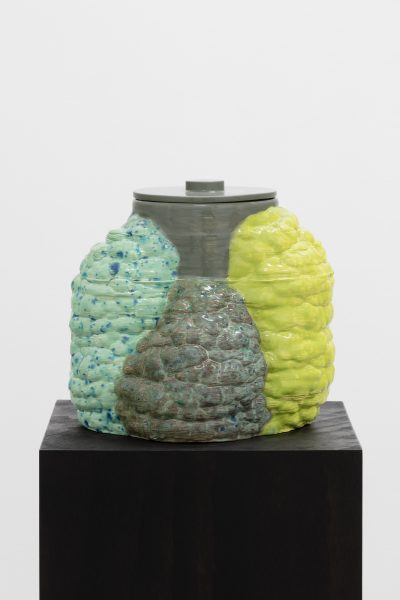 Urna, 2021ceramic
Urna, 2021ceramic
33×30×30 cm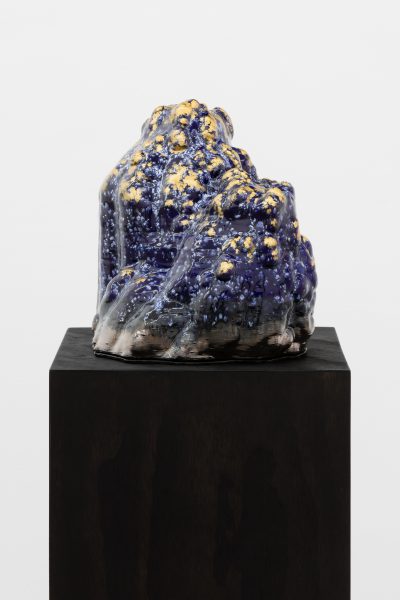 Canopo (urna), 2021ceramic
Canopo (urna), 2021ceramic
36×33×26 cm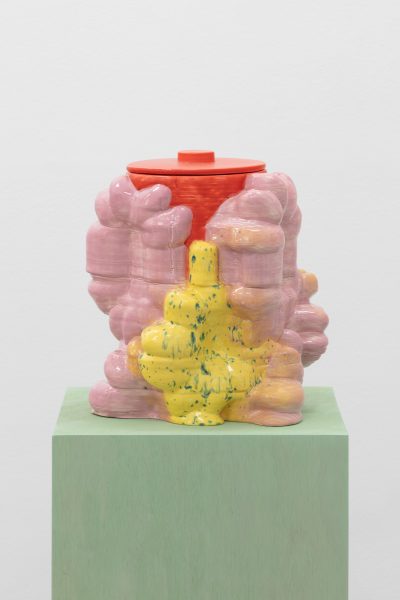 Urna, 2021ceramic
Urna, 2021ceramic
36×30×30 cm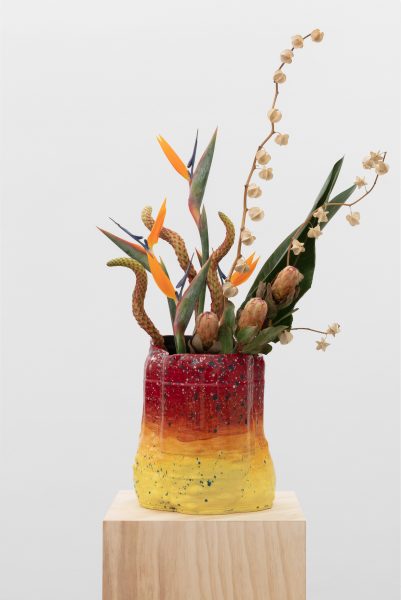 Vaso (urna), 2021ceramic
Vaso (urna), 2021ceramic
37×29×27 cm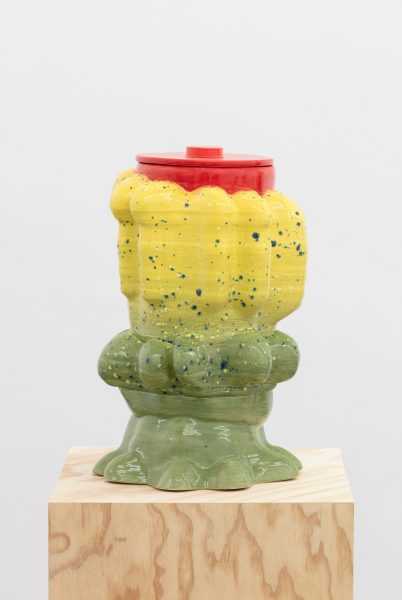 Urna, 2021ceramic
Urna, 2021ceramic
45×28×27 cm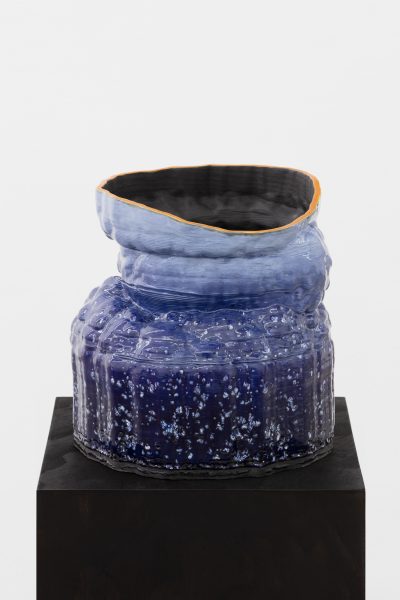 Vaso (urna), 2021ceramic
Vaso (urna), 2021ceramic
34×32×30 cm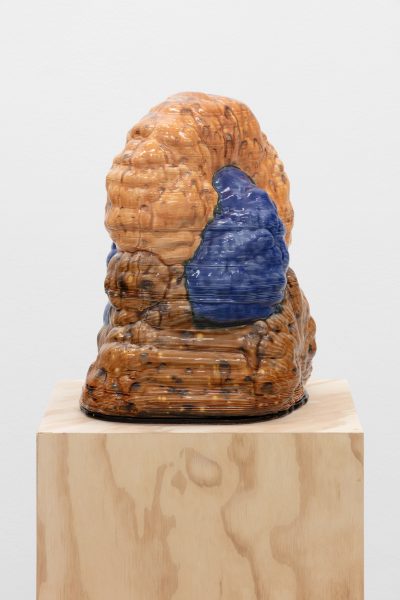 Canopo (urna), 2021ceramic
Canopo (urna), 2021ceramic
44×33×32 cm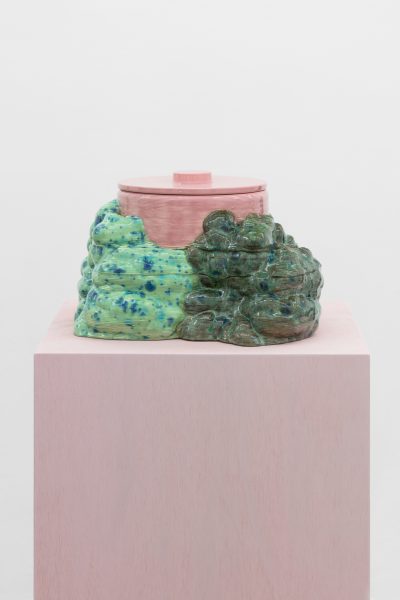 Urna, 2021ceramic
Urna, 2021ceramic
20×32×30 cm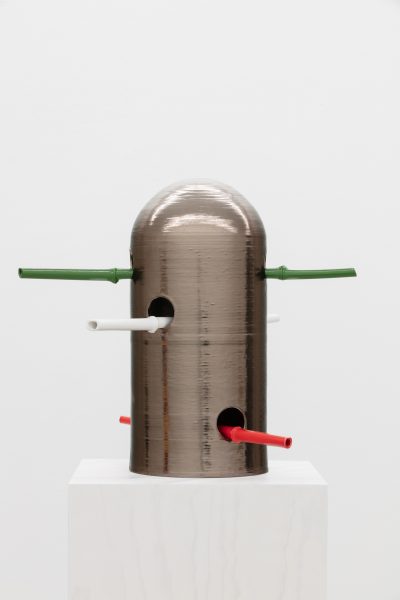 San Sebastiano, 2021ceramic
San Sebastiano, 2021ceramic
50×22×22 cm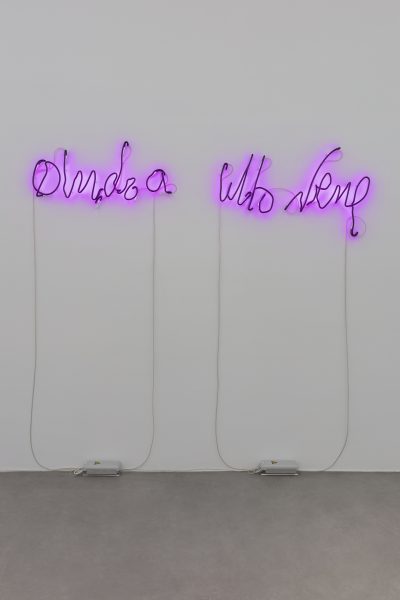 Angela (andrà tutto bene), 2022neon
Angela (andrà tutto bene), 2022neon
75×240 cm
Edition of 3 + 2 AP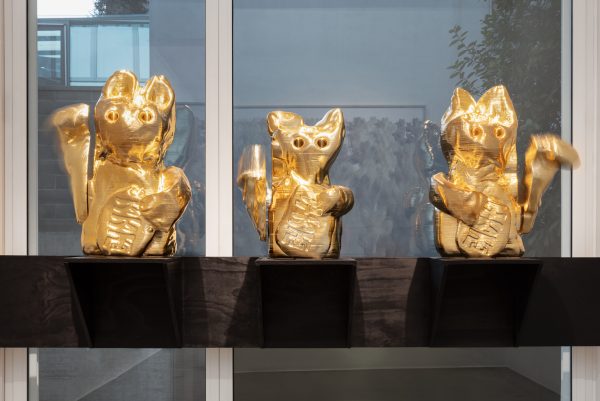 NOI, 20193 mechanical maneki neko, 3D printed pellet, electromechanical movement steel, aluminium, paint
NOI, 20193 mechanical maneki neko, 3D printed pellet, electromechanical movement steel, aluminium, paint
90x65x45 cm
70x53x40 cm
86x60x41 cm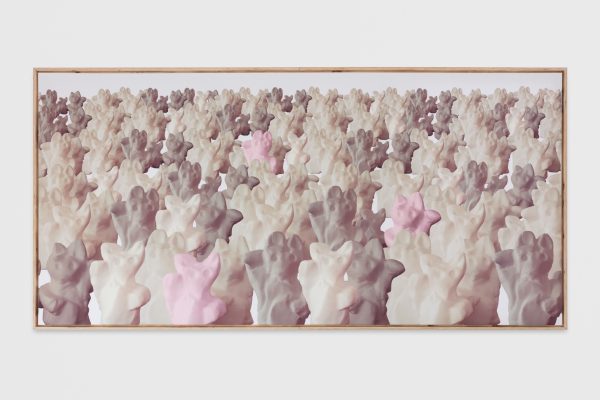 LORO, 2018print on artificial silk
LORO, 2018print on artificial silk
177×361×5 cm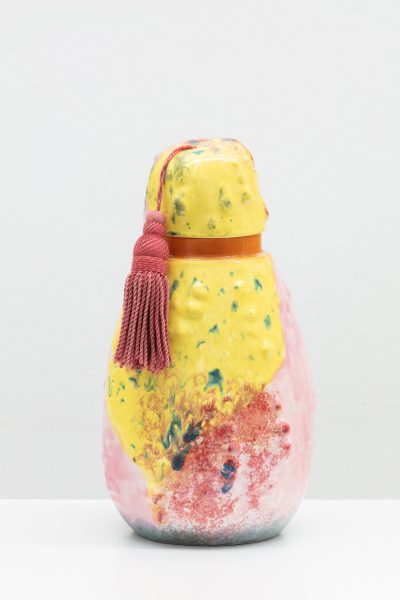 Urna, 2021ceramic and tassel
Urna, 2021ceramic and tassel
30×15×15 cm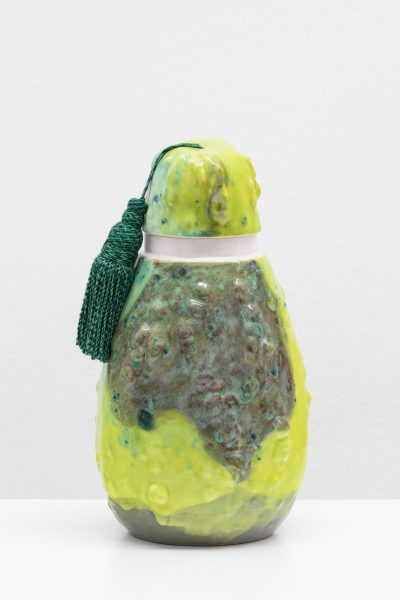 Urna, 2021ceramic and tassel
Urna, 2021ceramic and tassel
30×15×15 cm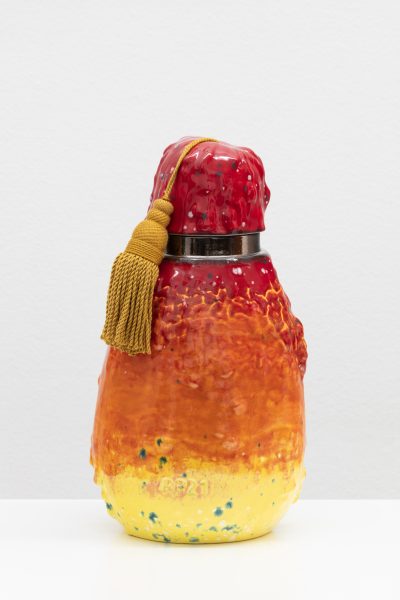 Urna, 2021ceramic and tassel
Urna, 2021ceramic and tassel
30×15×15 cm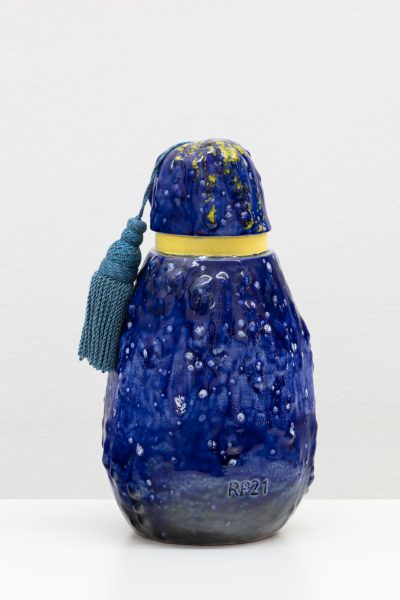 Urna, 2021ceramic and tassel
Urna, 2021ceramic and tassel
30×15×15 cm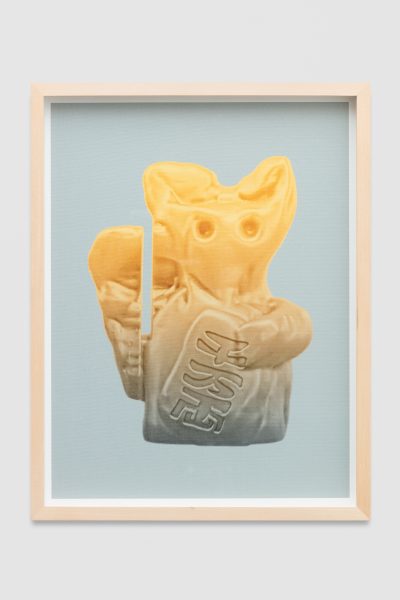 Untitled, 2018print on canvas
Untitled, 2018print on canvas
46×36×3 cm


















































